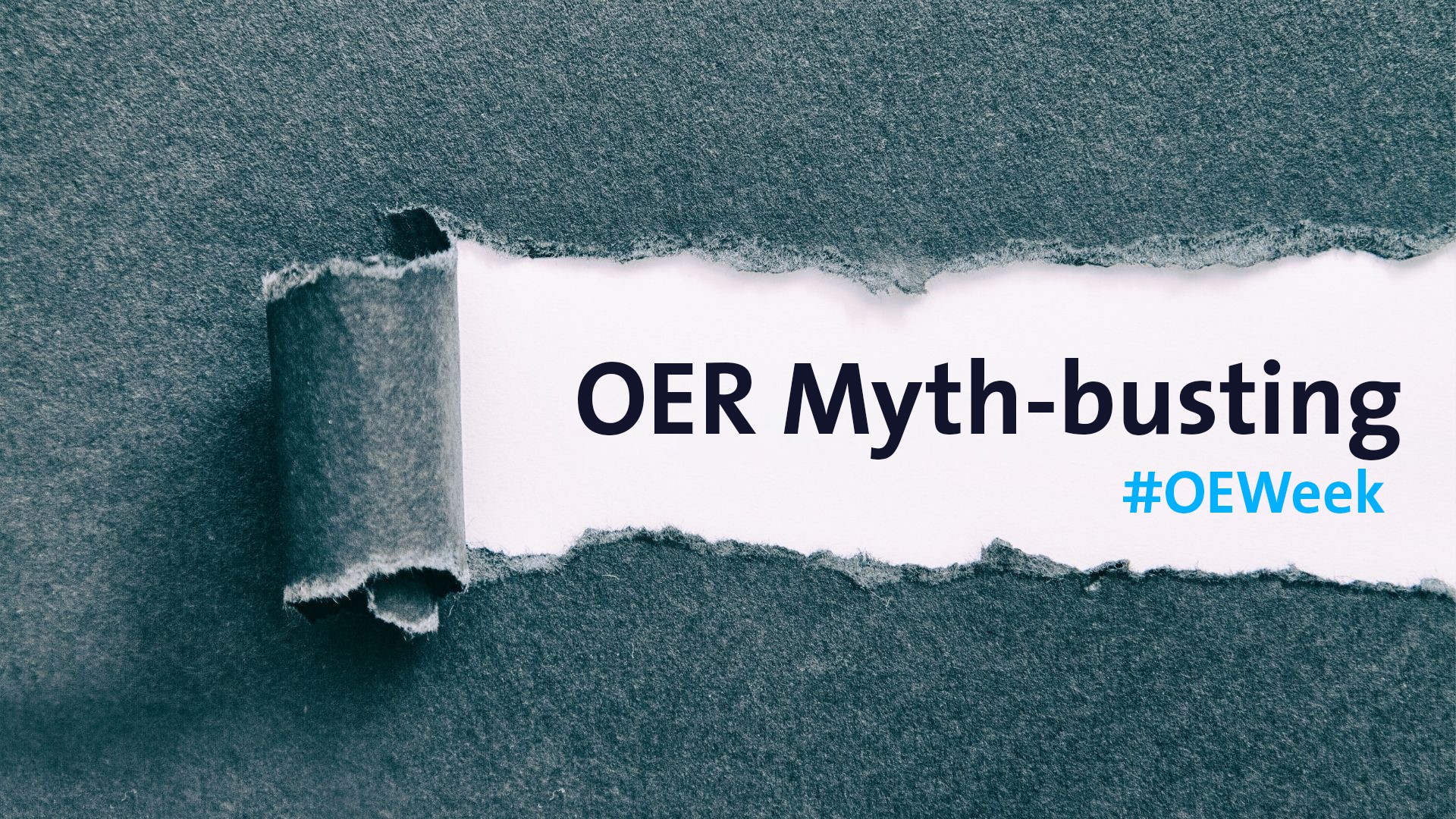OER myth-busting
If you are an educator, there is a pretty good chance you have heard of OER, but you may be unsure of what exactly it is. OER or Open Educational Resources are free teaching materials that are licensed for unrestricted distribution and modification to fit course-specific needs of instructors. Examples of OER include textbooks, websites, presentations, syllabi, and lesson plans. As interest in more varied and affordable course materials continues to rise, it is about time to debunk some myths about these free and open resources.
Myth 1: We are not ready for OER yet
OER can start small. You might be willing to start replacing traditional (licensed) resources with OER, whether it is a set of supplementary learning materials or an entire textbook. In some cases, you may have been using OER without even knowing it. For example, many YouTube videos and Flickr images are openly licensed.
Myth 2: Open simply means free
Open does mean free, but it is more than that. Materials that are considered truly ‘open’ have been given an open license by their creator that enables you (the user) to download, edit, and share this material with others without restrictions.
For example, if you as a faculty member find an open textbook online you can add to, edit, or reorganise the content to create learning materials that are tailored to your teaching needs. Students in class would get the textbook for free, and the fact that it is open allows them to keep a copy of it forever. In addition, that same textbook could be shared, adapted, and used by your colleagues at Maastricht University or beyond.
Myth 3: Good OER are hard to find
Though it is not as easy as simply using the material your faculty or department chooses to use from a ‘closed’ publisher, there are many repositories filled with OER for every level of education, most with some sort of review and rating system. The beauty of OER is that if you cannot find exactly what you are looking for, you can easily combine several resources and create exactly what you or your students need. You can even upload it and thus share it (again) for others to reuse and perhaps improve.
Myth 4: OER are applicable only for online learning
Although most of the popular OER content is distributed digitally, OER and digital resources are not synonyms. Openly licensed content can be produced in any format: paper-based text, video, audio or computer-based multimedia. Most important is that it can be easily adapted and used in several contexts (which often implies a digital format). Think of Word documents being easier to edit than PDFs. Or not requiring expensive viewers to make use of the content. Another asset of OER is that they do not prevent students to adapt it to needs in the context of accessibility.
Did these myths made you curious?
Check our selection of repositories and starting points.
Or, if you are interested in sharing OER yourself and need some guidance; we are happy to meet with you. Contact edusources-ub@maastrichtuniversity.nl to get started.
Attribution: OER Myths by OER Mythbusting!, licensed under a Creative Commons Attribution 4.0 International License. OER Facts by SPARC (2017), licensed under a Creative Commons Attribution 4.0 International License.
Author: UM Library
This article is licensed under a Creative Commons Attribution 4.0 International (CC BY 4.0) License.


0 Comments